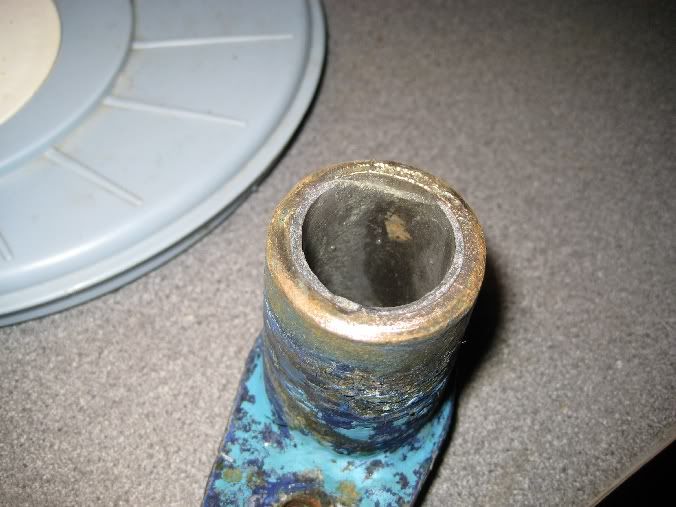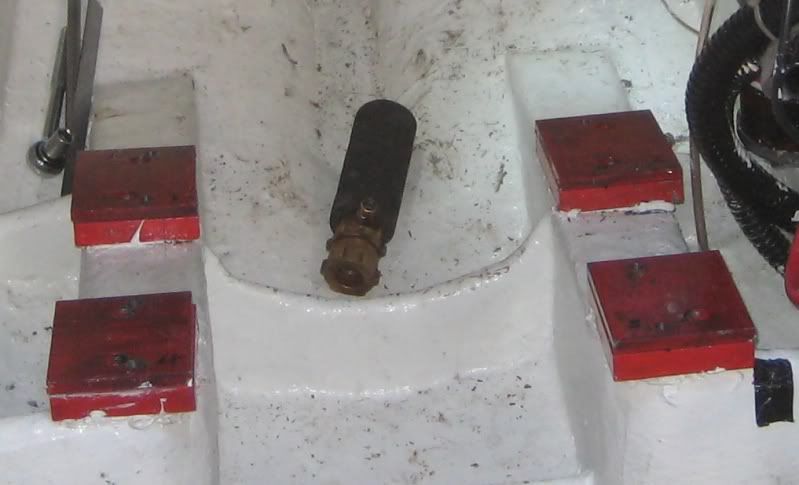When we first started talking about whether we could/should put in a new engine, it was a no brainer that I'd get someone to do it for us. I have little to no experience of engines, prop shafts, bearings, shaft seals and so on. There was just no way I'd be able to take it on. We're trying to do our house up as well, and, after a quiet period, work was picking up too.
A few phonecalls later and the £4k or so cost of a new engine would be doubled, or thereabouts if we had it fitted commercially. That simply was not going to happen. We had barely enough to pay for the engine, having put off our garden wall project until next year. I'd have to do it.
I started thinking. The wiring was OK - I was happy with that. The engine, itself, was held down by 4 engine feet, just nuts and bolts, and was bolted on to th eprop shaft, more nuts and bolts. I knew alingnment with the prop shaft was critical, but the adjustable engine feet made that easier. The more I thought about it, the more I thought that, having failed at nothing I'd ever really put my mind to, I could do it.
We quickly narrowed the engines down to a choice between a Nanni 21HP and a Beta 20HP. There was little in it, both being based on the same Kubota base engine. With the Southampton boat show approaching, however, Beta offered us a 'show only' deal that was far better than we'd hoped for. So Beta it was. We placed the order, removed the old engine and waited.
We'd been told by Beta Marine that we'd likely need a new prop. Looking at the prop shaft, it made sense to replace that as well - it was worn, and initial calculations suggested it was 75mm too short. Order placed.
I then examined the cutlass bearing, what was left of it at least.

Part of it was cracked, and part worn through. The prop shaft moved significantly, so an order was placed to replace the original white metal bearing with a composite one.
Then we turned our attentions to the engine mountings. The original ones, which we sold with the Bukh, were set into two fibreglass plinths, set at an angle., and seen in the above photo. The new engine mountings did not quite fit the pattern, and, by our calculations based on drawings from Beta, were around 30mm too low.
We could ask Beta to modify the engine feet, to fit the old engine mounting position, or try it ourselves.
I came up with a plan. Bolt a 20mm thick steel plate to the original engine mountings, and tap into that for the new mountings. A further 10mm plate, fitted as a spacer, would give us our 30mm raise in height, and a couple of large holes drilled in that would hide the heads of the bolts holding down the bottom plate. I'd use sikaflex 291 marine bonding agent and sealant in addition to the bolts, for extra strength.
Here are the lower, 20mm plates, bolted and sikaflexed down. You may be able to make out the tapped holes for the new engine mounting bolts.

The upper, 10mm plates, being primed. You can see the larger holes which will fit over the bolt heads in the lower plate.
[caption id="" align="alignnone" width="300" caption="Upper Plates"]
 [/caption]
[/caption]And the upper mounts in position. The holes for the lower plate bolt heads, and clearance holes for the engine mounting bolts to penetrate into the lower plate, just visible.
[caption id="" align="alignnone" width="300" caption="Mounts"]
 [/caption]
[/caption]Hopefully, the following diagram shows what the photos do not:
[caption id="" align="alignnone" width="350" caption="Diagram"]
 [/caption]
[/caption]For the electrics, I'd need to manufacture something. The old bukh control panel was larger than the newer, Beta one, and there was a hole in the console that needed covering. I'd also planned to move the water intake. It was positioned behind the engine, necessitating a trip into the cockpit locker to switch the seacock on and off for Louise. I wanted to put it in front of the engine.
Whilst the boat was out, there was also a worn rudder bearing, a pitted rudder 'shoe' and various other jobs, all of which it made sense to tackle whilst the boat was out of the water.
More to follow.